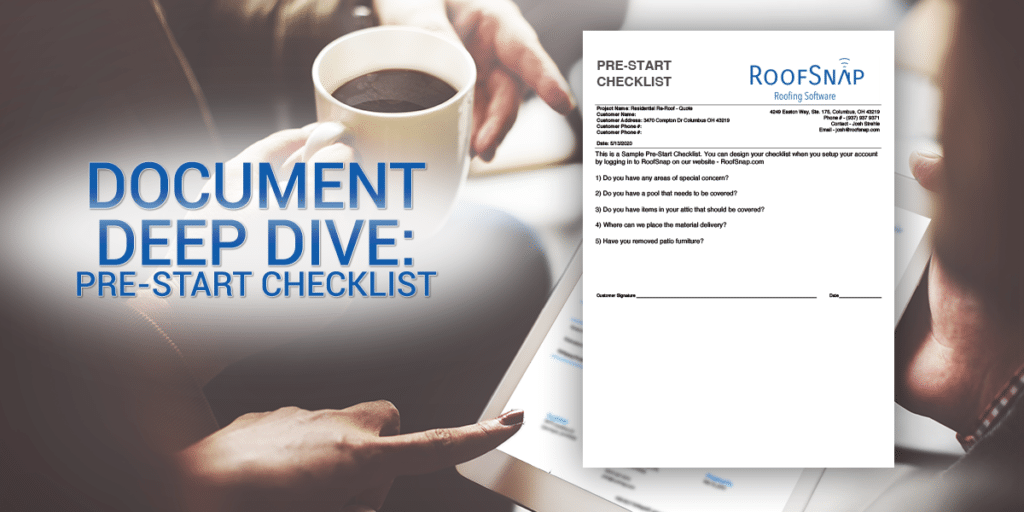Email marketing plays a central role in client relationship-building, lead generation, brand awareness, and customer engagement between purchases. Here’s how construction pros can do it themselves.
Every day, 4 billion email users log in and check their inboxes. This astounding figure is set to reach 4.6 billion by 2025.
For context, Facebook has about 2.96 billion monthly active users. If you are not using email to market your construction company, engage your customers, and convert prospects, you are leaving money on the table.
This article will explain what email marketing is and discuss some common pitfalls. Then, we’ll share eight quickfire tips to help your emails stand out and win business. In short, we’re simplifying email marketing for contractors, so you reap the benefits of this powerful marketing channel.
YOU MIGHT ALSO BE INTERESTED: Contractor Quick-Start Guide to Email Marketing
What is email marketing?

Email marketing is a digital marketing channel that doubles as a form of direct marketing. Emails inform your mailing list subscribers about products, services, and specials. It can also be an educational tool that demonstrates your expertise and generosity.
Email marketing plays a central role in client relationship-building, lead generation, brand awareness, and customer engagement between purchases. The next time they need a contractor, your business will be top of mind.
Despite the rise in social media marketing, email marketing still delivers the highest return on investment (ROI) of any marketing channel. For every $1 spent, email marketing delivers an average of $36 in return. Still, more small businesses use Facebook to reach customers than email marketing.
Five Common Email Marketing Pitfalls

While email is one of the most lucrative marketing channels, pitfalls and mistakes prevent contractors and construction businesses from gaining the potential rewards. Here are some of the most common:
1. Too Much Selling
Of course, you want to convert email subscribers into paying customers. First, however, you need to focus on building a genuine connection with your audience by demonstrating your expertise and trustworthiness. If every email you send focuses only on sales, expect your open rate and subscriber list to dwindle.
2. Not Optimizing for Mobile
More than 61.9 percent of emails are opened on mobile devices, and this number is likely to continue to rise in the coming years. If your emails don’t display properly, subscribers won’t bother opening them in the future.
3. Writing Boring Subject Lines
On average, 21.77 percent of marketing emails sent by construction industry companies are opened. Subject lines make or break your emails’ first impressions, so if yours are not compelling, your customer will move on to the next.
4. Failing to Segment Your Customers
Your customers differ—some want full home refurbishments, and others are looking for repairs to their commercial premises. Therefore, different messaging will resonate with different groups. Email marketing is not one-size-fits-all, and failing to segment your subscribers can lead to poor performance.
5. Skipping the Call to Action
Emails should have a defined purpose. For example, you might want your customers to take advantage of a seasonal promotion or refer a friend to your business. Always include a call to action that explicitly encourages readers to take the next step.
RELATED ARTICLE: How to Turn One-Time Customers Into Lifetime Customers
Eight Quickfire Email Marketing Tips for Contractors
You’re convinced. Email marketing is a must-do for your contracting or construction company. Here are eight tips that’ll supercharge your email marketing strategy and help you convert email subscribers into happy, loyal customers and brand advocates.
1. Get the Word Out
Your email campaigns will perform best if you have an engaged list of contacts. To start building your email list, promote it. Be clear about what you kind of content you’ll deliver if your customer signs up. Add a call-to-action on your website. You can also include a prompt on any printed marketing materials, such as letterbox flyers.
2. Always Add Value
You want to take advantage of email marketing, but you can’t help but question, “Why in the world would anyone sign up to my email list?” That’s a fair question. After all, no one wants spammy sales emails or irrelevant newsletters clogging up their inbox.
So, consider the value you could offer. Put yourself in your customers’ shoes and think about the types of meaningful, practical, and helpful content you can create. For example, you could send through a summer property maintenance checklist or a guide for choosing a reliable home builder. You could share a fun and easy DIY project or offer a straightforward discount. Whatever you decide, ensure the value you’re offering is relevant to the subscriber. There’s no point in sending a home maintenance checklist to your commercial clients, for example.
3. Looks do Matter
Your email should look sleek, modern, and professional—a refined layout enhances the legitimacy of your brand. Consider the following key features when designing your marketing emails:
- Logo. Your logo should appear at least once in your emails.
- Font style and size. Ensure the text is legible, including on mobile.
- Colors. Keep your colors consistent with your brand identity.
- Tone. Use a friendly yet professional tone that’s in your brand’s voice.
- Photos and graphics. Visual elements should be high-quality (i.e., not blurry or pixelated).
4. Choose Your Sender Name Carefully
We are all accustomed to receiving spam emails, and the sender’s name is one of the tell-tale giveaways. So, be sure you select your sender name wisely.
At first thought, you might feel it’s best to use your company name. However, people are more likely to trust emails from a person. Consider using your name (or another team member’s name) followed by your company name.
Bonus tip: Never send marketing emails from a noreply@companyname.com email address. This tells recipients that the conversation is one-way, and you don’t want to hear from them.
5. Proofread and Proofread Again

Marketing emails are a reflection of your construction business. Grammar mistakes, misspelled words, and typos are unprofessional. If you don’t feel up for the task, you could outsource the writing or use a tool like Grammarly. The free version is an adequate tool to help to avoid common grammatical errors.
6. Keep Tabs on Important Metrics
Marketing without measuring is like building a house without a plan. So, keep a sharp eye on key metrics, including:
- Average open rate. What percentage of email recipients are opening your emails? If the percentage is low, consider experimenting with different types of subject lines, including personalized subject lines.
- Average click rate. How many email recipients who opened the email clicked on a link? If the percentage is low, think about the relevance of your content, the quality of your call to action, and other ways you can draw attention to your links (buttons, for example, can be effective).
- Hard bounce. A hard bounce suggests that an address cannot receive emails anymore. You can delete these emails from your mailing list to avoid wasting effort on dead ends.
- Soft bounce. A soft bounce indicates a temporary issue with deliverability. For example, the recipient’s inbox might be full, or their email service provider’s server might be down. Do not remove these emails from your mailing list.
- Unsubscribe rate. What percentage of people who opened the email unsubscribed? If the percentage is high, rethink the value you are offering and revisit your audience segments.
What does good look like? Here are the construction industry email marketing benchmarks:
| Average open rate | Average click rate | Hard bounce | Soft bounce | Unsubscribe rate |
| 21.77% | 2.26% | 0.86% | 1.28% | 0.39% |
7. Get Your Timing Right
Timing is everything. Send your marketing emails at the wrong time, and watch your open rates drop. Send them at the right time and drive up your engagement. Here’s how to determine the right time of day and day of the week to send your emails:
- First, try the email marketing standard. According to a survey of 300 US email marketers, the highest level of engagement occurs when marketing emails are sent between 9 a.m. to 12 p.m. and 12 p.m. to 3 p.m. As for the best day of the week, 22.6 percent said Monday, 24.9 percent said Tuesday, and 21.3 percent said Wednesday.
- Then, keep an eye on your metrics. Did the email at 9 a.m. on Monday see more or less opens than the email at 3 p.m. on Tuesday? Continue experimenting until you discover the best time and day for your audience.
8. Automate Your Email Marketing
Running a construction business is no small undertaking. You need to be on top of client requests, your staff, and your job sites—not to mention the never-ending list of admin tasks. If you feel like email marketing is just too much to take on, consider automation.
Email automation allows you to leverage a tool to compose a number of emails and send them to the right people at the right time. It’s a set-and-forget solution that minimizes the amount of manual work required.
Email Marketing for Contractors Made Easy
RELATED ARTICLE: 6 Step Email Marketing Crash Course

Email marketing is extremely powerful, and with the right strategy, it can become your most profitable marketing channel. Now that you know how to do email marketing for contractors and construction businesses, it’s time to get started. Get started with our quickfire tips while you avoid common mistakes and pitfalls and watch your business reach new heights.
If you’re ready to start an email marketing campaign but not sure where to start, here are six steps you can take today to get started:
- Define your goal. Are you reaching out to customers you’ve worked with before to drum up repeat business? Are you engaging prospects that contacted you through your website? The more specific you can get about why you want to send your first email campaign, the better your results will be.
- Create an email list. Once you’ve determined who you want to email and what you hope they do after receiving your emails, you’re ready to build your email list. Make sure any contacts you’re emailing have opted in.
- Plan your content. Think about the cadence you want to deliver your emails. Will you send weekly or monthly? Then, think about how long you want the campaign to last. Will it run for a month, a season, or a quarter? Plan your content around the questions your contacts may have and what action you want them to take next. Do you want them to call or schedule an appointment?
- Personalize your emails. In addition to personalizing your emails by using your contact’s name and other details, also focus on their interests. What type of project is your prospect our customer likely to have questions about? Do they have HOA concerns about their next project? The more you can zero in on their needs, the more likely they’ll be to take the next step with your business.
- Factor in lifestyle: Consider the email addresses you’re sending to; are they work addresses or personal email addresses? This will tell you something about the best time to send an email to your contact as well as the length and format of the email.
- Optimize your emails. Most email marketing tools provide reporting on important engagement metrics like email opens and clicks. Look for trends as you run more campaigns over time. Is there a significant drop-off after the 2nd email? Take that information to make decisions on how to make your campaigns more effective.
Need easier remote roof measuring?
Get your first measurement free.


